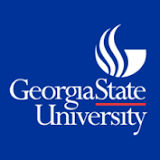IG-105, N-(2, 6-dimethoxypyridine-3-yl)-9-methylcarbazole-3-sulfonamide, a novel carbazole sulfonamide, shows a potent anticancer activity in a variety of human tumor cells in vitro and in vivo. In the present study, a rapid and convenient liquid chromatography/tandem mass spectrometry (LC-MS/MS) method was developed and applied to the pharmacokinetic study of IG-105 in rats. Chromatographic separation was accomplished on a C18 column using an isocratic mobile phase of acetonitrile-water-acetic acid (56:44:0.2, v/v/v). The ion transitions of IG-105 and combretastatin A4 (internal standard) in selected reaction monitoring mode were m/z 398→154 and m/z 317→286, respectively. The assay exhibited good linearity over the range of 2-512 ng/mL. Intra- and inter-day precisions were within 8.2 %, and the accuracies ranged from -6.0 to 3.7 %. The extraction recoveries were higher than 90 %, and the matrix effects were negligible. All quality control samples were stable at different storage conditions. The validated LC-MS/MS method was successfully applied to a preclinical pharmacokinetic study of IG-105 in rats after a single oral dose of 100, 250, or 1000 mg/kg which showed tumor growth inhibition activity. The absorption of IG-105 was proved to be rapid but saturated to a certain extent into the blood circulation, from where it was distributed and eliminated gradually.







